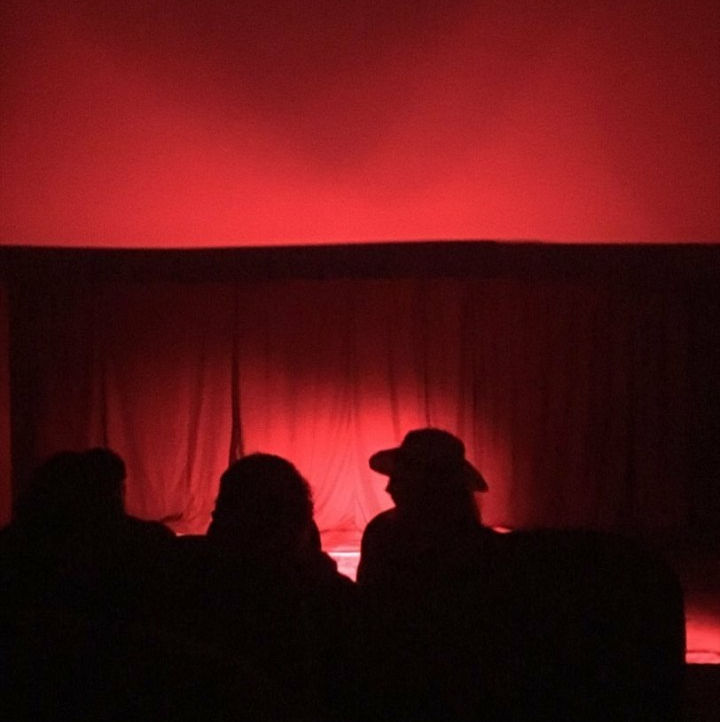On the Fringe: Woordfees Fringe stumbles in first year
- Kara van der Berg

- Mar 11, 2019
- 3 min read
This article was first published on MatieMedia.
Fringe, the new category at Woordfees, did not, despite its vibrant display of up-and-coming talent in the industry, attract enough attention or attendance.
Rushed planning and little advertising has frustrated artists and led to poor turnouts at shows. The future of Fringe remains uncertain.
This more “experimental” part of Woordfees is aimed at attracting a younger crowd. “Keep yourself young at Woordfees Fringe,” the Woordfees website reads.

Fringe festivals are traditionally where new shows debut in order to experiment their production in front of an audience.
The concept of Fringe started at the Edinburgh festival by artists who were not invited to perform at the main festival, so instead created their own platform.
Today, the Edinburgh Fringe Festival is the biggest arts festival in the world.
“It’s a space for more experimental pieces, so people can do anything,” says Corne Kruger, one of the organisers of Fringe at Woordfees. “It’s daring work.” Teething errors of the first Fringe were apparent to those performing. “I feel that because it is the Woordfees’s first Fringe, things were a little confused,” says Jean-Pierre Lesch, writer, director and actor of Alles is nie altyd soos dit lyk nie.
“It is a trial-run year,” says Kruger.
“Applications closed 1 February and by 7 February the program was released [to the artists] and a week later scheduling was sent out,” Kruger added.
Margo Kotze, who wrote and stars in MOS which is showcasing at Fringe, said: “Only two weeks before Woordfees started, I heard that I was selected for Fringe. I technically only got my performance dates a week before I had to perform.”
“In my opinion, communication was a little slow,” says Lesch. “Everything was down to the last minute and roughly a week and a half before our show we got the final answers regarding our stage specifications.”

A big problem stemming from late organisation was the advertising of shows. “This obviously made advertising a little difficult,” Kotze says, whose first show at Fringe had only five audience members.
Likewise, Saturday night’s performance of Die Meermin Kompleks, by Du Toit Albertze, only had three people in the audience.
“I was not happy at all with ticket sales,” Lesch states. “During the week our 21:30 show we had one audience member and then got six or seven people off the floor – including Woordfees staff members.”Kruger agrees with this.
“Naturally there wasn’t a lot of wiggle room for organisation as there is with the main festival program, but it is a Fringe,” she stated. “We wanted to see what works and what doesn’t.”
“Fringe is a platform where people can test if their ideas are working and they can work on their shows,” says Kruger. However, at this year’s Fringe, most of the shows have been performed at other festivals and theaters.
“Because Fringe was organised too quickly, nothing was new,” Kotze states.
The 14 shows on display at Fringe covered a wide spectrum of genres and styles. MOS was a comedic look at the dilemma of young students as they prepare to enter the workforce. In Whorefish bloomers: The waitresses’ lament, which was nominated for two awards at the Cape Town Fringe in 2017, was a feast-for-the-senses satire masked as a cabaret.
Die Meermin Kompleks dealt with homophobia within the Afrikaner community. There were other organisation issues which confused audience members. Saturday night’s performance of In Whorefish bloomers was scheduled to start at 18:00, although the Woordfees program and tickets stated that it would begin at 17:30.
All the shows at Fringe are performed in one of the cinemas at Pulp Cinema in the Neelsie student centre. “We obviously started very small this year. We only had space for 14 shows and we have a very small venue,” states Kruger.
Neither Kotze nor Lesch was very impressed by the venue. “It was not suitable at all,” states Lesch.
“It wasn’t horrible, but it wasn’t great,” Kotze echoes.

As Fringe is in its first year, it is “trial run” and the kinks are still being worked out. “It’s a trial-and-error year, so I do think there are people who are unhappy with the organisation,” Kruger said.
It is not yet certain if Fringe will return to Woordfees next year, but those who participated and planned it are optimistic for the future.
“It’s such a cool concept and there is so much space for growth. I’m really looking forward to see[ing] what they do in the future,” says Kotze.
“I really appreciated the opportunity and hope to enter more of our young productions next year,” Lesch says.
“If it is a success and we do it again we know what works and what doesn’t,” says Kruger. “We will have to close applications a little sooner. To do it a month before the festival begins did not work.”



Comments